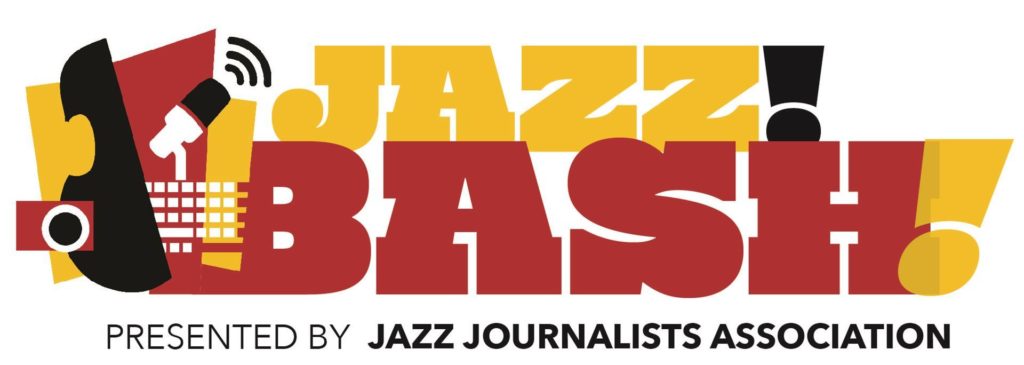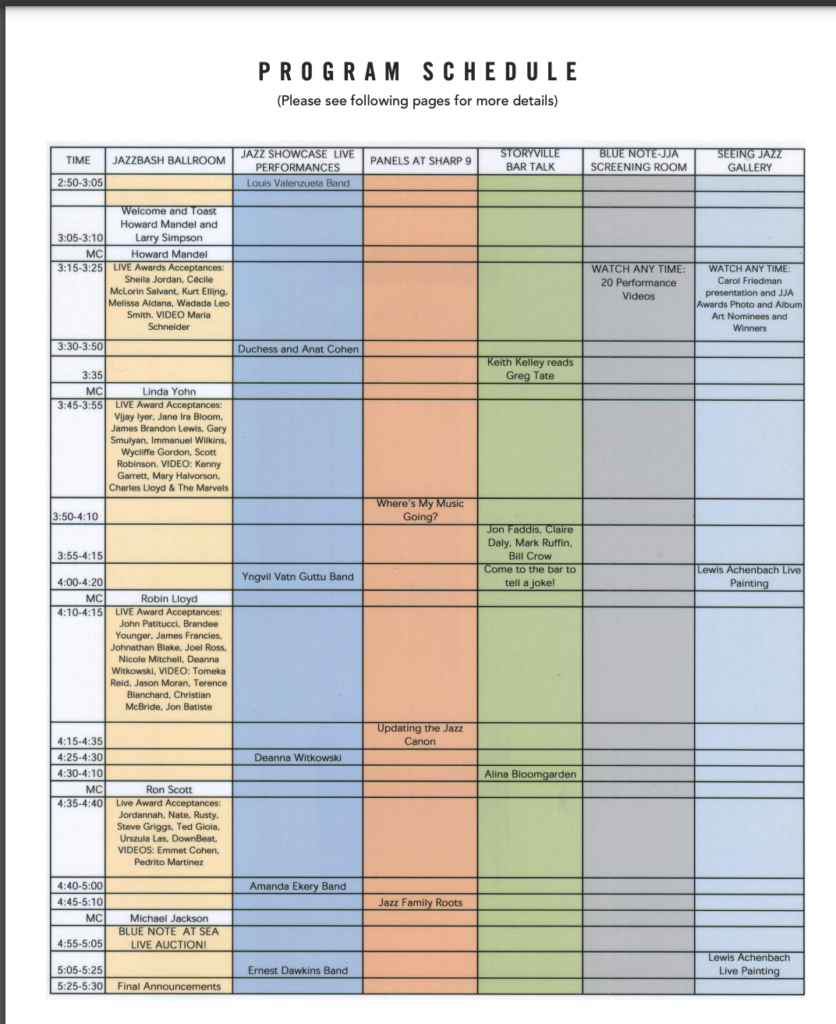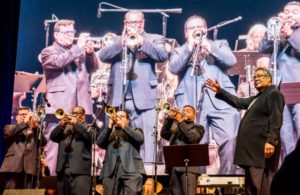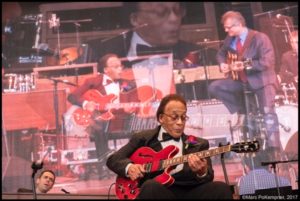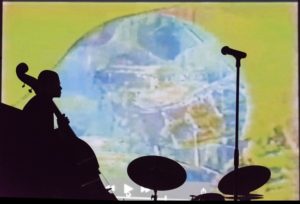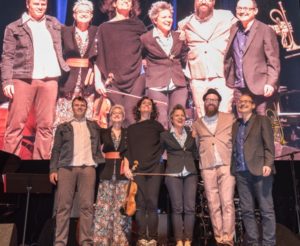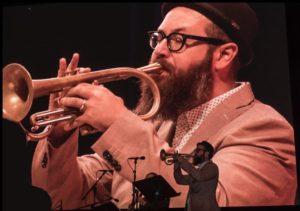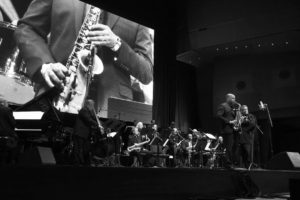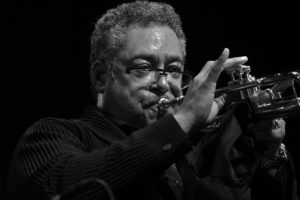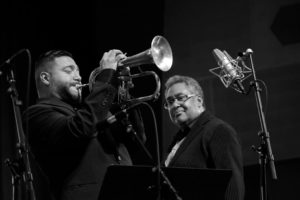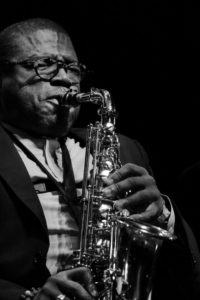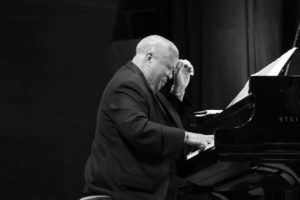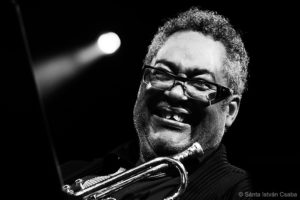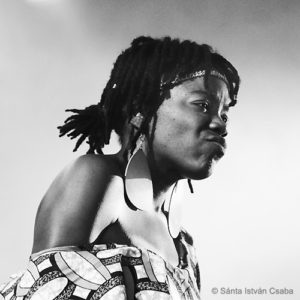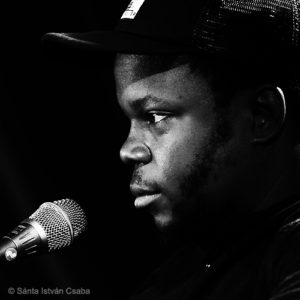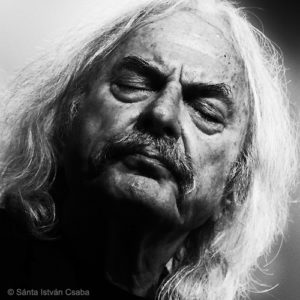I daresay the JazzBash! on Sunday, 9/11 is the first ever virtual hybrid Awards party/live Jazz Cruise auction/online concert from six U.S. cities/conference of activist panelists/bar with storytellers and presenters, live improvised painting, exclusive jazz photography exhibits and more — in immersive environments depicting noted jazz sites through which attendees — musicians, critics, the general public — can roam at will, by cursor.
Thanks to the genius of SyncSpace.live, the Jazz Journalists Association (of which I’m president, driving this production — promotion acknowledge!) is throwing a one-time-only, five-ring demonstration of what can be done, media-wise, to bring together individuals and groups in an online experience with interactive functionality beyond that of Zoom, for instance. “Rooms” in the customized JazzBash pay homage to the Jazz Showcase of Chicago, Sharp 9 Gallery in Durham NC, and the Blue Note NY, where many of the 20 archival performance videos were shot. Attendees can talk in groups or private side-chats, use text box, vote for art preferences — and bid in live auction for a stateroom on the Blue Note at Sea 23 cruise from Ft Lauderdale Jan 13 – 20, with stops in St. Maarten and St. Thomas — (minimum bid $700 for a $7000 value, contact CruiseBid2022@JazzJournalists.org).
Some 60 musicians are participating with live appearance or video messages, including winners of the 27th annual JJA Jazz Awards announced last April such as Musician of the Year Jon Batiste, Lifetime Achievement in Jazz honoree Sheila Jordan, Kenny Garrett for his Album of the Year Sounds from our Ancestor, reeds master Charles Lloyd, who won Midsized Ensemble of the Year with his band The Marvels (featuring guitarist Bill Frisell).
The singing trio Duchess performs live with guest clarinetist Anat Cohen; we’ll hear guitarist Louis Valenzuela’s band from San Diego, pianist and scholar Deanna Witkowski playing a Mary Lou WIlliams composition from Pittsburgh; pianist-vocalist-El Paso Jazz Girls founder Amanda Ekery, and saxophonist Ernest Khabeer Dawkins‘ quartet from Chicago. Terri Lyne Carrington, Nicole Mitchell and Yngvil Vatn Guttu — a multi-instrumentalist arts activist from Anchorage — discuss “Updating the Canon,” (moderated by WRTI’s evening jazz host Greg Bryant); other panels being “Where My Music’s Going” (Jane Ira Bloom, Vijay Iyer and James Brandon Lewis, moderated by Neil Tesser) and “Jazz Family Roots” (Melissa Aldana and James Francies, moderated by Willard Jenkins). Photographer Carol Friedman shows her iconic “Images,” Lewis Achenbach will paint improvisationally to the live music, the great Bill Crow will tell jazz stories and great Jon Faddis will crack jazz jokes. That’s not the half of it.
The point of all this is to show that digital media be very enjoyably and creatively used to convene, communicate, entertain and enlighten. We don’t have to sit in checkerboard squares as dull as office cubicles in order to have fun, or be productive, remotely. While sitting at our laptops we can leave our surroundings to commune with folks half-way ’round the world. It amazes me. No plane ticket necessary, no hotel room, and a great savings of time.
Maybe the pandemic is over, and in-person normality coming back. Wouldn’t that be nice? But if it ain’t, and we want to scale back traveling yet reach ever broader networks . . . there are alternatives. True, there will be no pressing of the flesh at the JazzBash!, group drinking will happen only on a distanced and byo basis, glad-handing will be virtual. Well, there’s nothing like the real thing — but the JazzBash! is a stab at an engaging second best.
